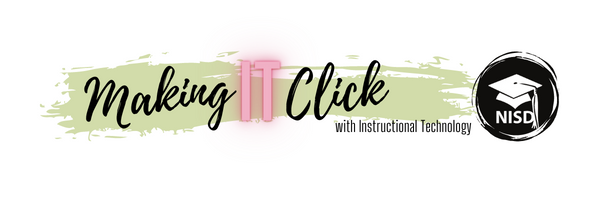We have all heard the saying about “...preparing students for jobs that don’t yet exist.” While that may be true, the best preparation for a future yet to materialize is to let go of the idea that we, the educators, are responsible for preparing them for the future, at least in the way traditionally thought. It is more necessary for educators to step out of the way and to let the students take control of their own learning in order to foster engagement, authentic growth, and innovation.
Rob Austin & Lee Devin, the authors of Artful Making: What Managers Need to Know about how Artists Work, describe innovation as a process where managers need to forget about the traditional destination and journey mindset. The idea that someone has to have a crystal clear objective in order to justify movement toward a goal, at least as we know it, is becoming obsolete. In truly innovative environments, collaboration, flexibility, creativity, and growth mindsets can lead to the discovery of new paths rather than a predictable route to success. When we work with our students to facilitate the realization of their creative ideas, our students can develop necessary skills for the modern workplace while becoming leaders that guide their own success. Setting students free to create and innovate is interesting in theory, but how does this look in today’s classroom?
At Eaton High School, William Gilbert’s Computer Programming students investigated possible uses for innovations in virtual reality technology prior to being tasked with coding and creating their own tools, geared for the same purpose. Students were given the freedom to imagine other applications and uses for this type of technology and began inventing their own VR programs designed to meet real needs predicted for future learners and workers. After learning about the educational benefits or virtual reality, many students began working on utilizing VR technologies in the workplace and school settings and have even begun testing their work in the context of their existing classrooms.
Business Academy students in Tabatha Everett’s Entrepreneurship course were given the challenge of studying and determining future viability of an up and coming technological business model in their Pokemon Go AR Challenge. These students used a case study of Niantic's Pokemon Go app, from a previous Virtual Enterprise International Competition, as a model for mobile augmented reality use in business. They studied usage trends, obstacles for expansion, effects of the app on user quality of life, modifications and additions to the game, as well as the company’s efforts to meet user demand.
The student led part of this project allowed them to critically explore real questions surrounding the game, the technology used, and future opportunities for AR revealed by Niantic’s venture. Students then created a proposal of their own for marketing with augmented reality integration in other business areas. Some of these proposals explored the potential for business partnerships through integration of AR, virtual dressing rooms for purchasing clothing, and virtual showrooms where consumers experience product features of items like furniture, cars, or appliances. One group even outlined the potential for online AR marketing events with real rewards for consumers. The students exploration of this innovative platform allowed them the ability to dream about untapped ways this technology can be used to impact the future lives of consumers.
Another group of students in Donny Pharr’s Introduction to Aircraft Technology courses researched commercial drone use and considered business models, laws restricting flight areas, and other logistical factors related to commercial drone aviation. After completing the initial research process, students were given the task of creating their own plan to re-purpose drone technology for the benefit of school district sponsored events. They were given the freedom to invent ways this technology could enhance experiences at high school sporting events. The process resulted in groups outlining utilization of drones for concession stand food delivery at NISD football games. They mapped out geofencing boundaries around the NISD stadium as a foundation for designing their delivery service, via drone technology. This real world scenario was conceptualized by allowing students to creatively think about solutions for the problem of crowded venues and long concession lines at NISD events. They met various obstacles and limitations while working their way through the learning process, which resulted in them constructing their own ideas for innovative and practical use of existing technology while visualizing the potential for drones to breed entirely new careers.
While these classes are just small examples of student exploration and innovation, they are prime instances of the ways learners can begin to dream about the future and how their own educational journey can forge a new path that previously did not exist. Of course, just removing all classroom guidance and parameters for students is not what is being suggested. Whether your students are part of specialized areas such as these, or whether they are searching to connect existing content and skills to real life, giving them the freedom to explore possibilities for applying skills beyond the classroom is what will open up their imaginations to new ideas. Simply put, if we present problems for our students to solve and then step out of their way in order to let them dream, fail, learn, and innovate, we can facilitate results that outshine anything previously imagined and students can forge incredible new paths for their futures.





No comments:
Post a Comment
Note: Only a member of this blog may post a comment.